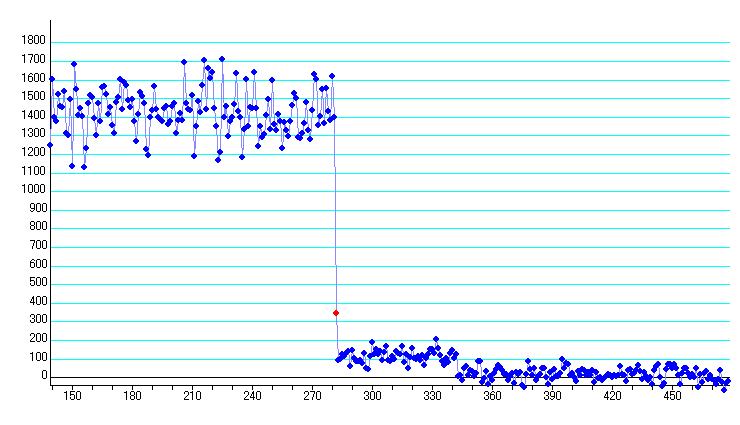
Double Star Observation SAO118981(=XZ17514,=ZC1692) in Apr.28 2007
Apr.29 2007
1.Abstract
Masayuki Ishida (Moriyama ,Shiga) sent me a .CSV file of his observation of a double-star SAO118981. And I also observed same event at Ikeda-Town, Nagano Pref.. I analyzed these observations using Limovie. The result of astrometry and photometry are as follows.
|
Table 1. Result of analysis |
||
|
|
Observation |
Catalog |
|
Separation (arcsec) |
0.80 |
0.8 |
|
Position Angle (degree) |
136 |
130 |
|
If the magnitude of the pair is 6.94 then .. |
||
|
First star(mag) |
7.0 |
6.9 |
|
Second star(mag) |
9.8 |
9.9 |
2. Limovie plot (overview luminous change)

Figure 1. Moriyama, Shiga
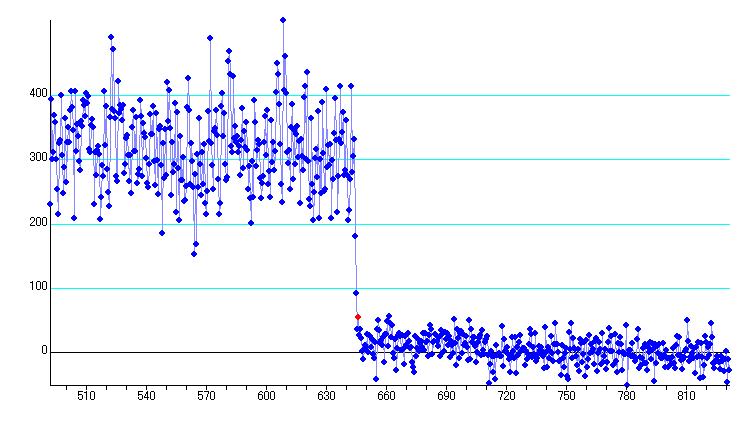
Figure 2. Ikeda, Nagano
3. Predictions and calculating parameters for analysis
3-1 Prediction
Table 2 Prediction derived from LOW
for Konohama, Shiga

For Ikeda, Nagano
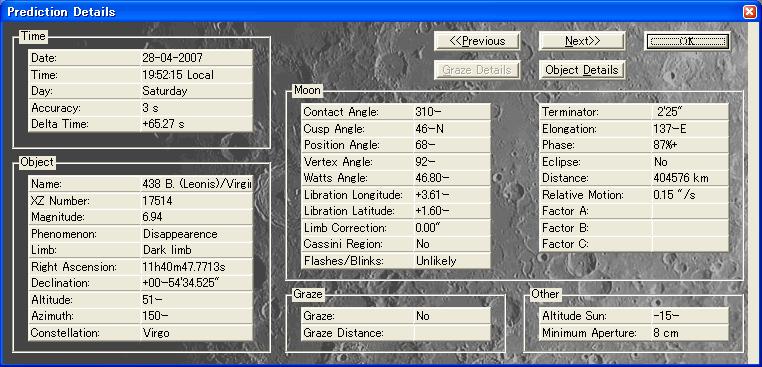
Table 3 Prediction derived from Win OCCULT.
For Moriyama, Shiga

For Ikeda, Nagano

3-2 Caluclate Linar velocity
|
for Konohama obs. |
for Ikeda, Nagano |
|
Va : Velocity as angle (“/sec), CCT : Contact Angle, RV : Radial Velocity Ds : Moon distance Then moon velocity V (m/sec) is calculated as follows. RV = cos(CCT)* Va Va = RV / abs(cos(CCT)) = 0.218 / abs(cos(+51)) = 0.3464 ("/sec) V = Ds*π*Va/(180*3600) Ds = 404564(km) V = 404564(*0.3464*pi()/(180*3600) = 679 m/sec
|
Va : Velocity as angle (“/sec), CCT : Contact Angle, RV : Radial Velocity Ds : Moon distance Then moon velocity V (m/sec) is calculated as follows. RV = cos(CCT)* Va Va = RV / abs(cos(CCT)) = 0.151 / abs(cos(+64)) = 0.3445 ("/sec) V = Ds*π*Va/(180*3600) Ds = 404576(km) V = 404576(*0.3445*pi()/(180*3600) = 676 m/sec |
4. Diffraction Analysis
4-1. Moriyama, Shiga.
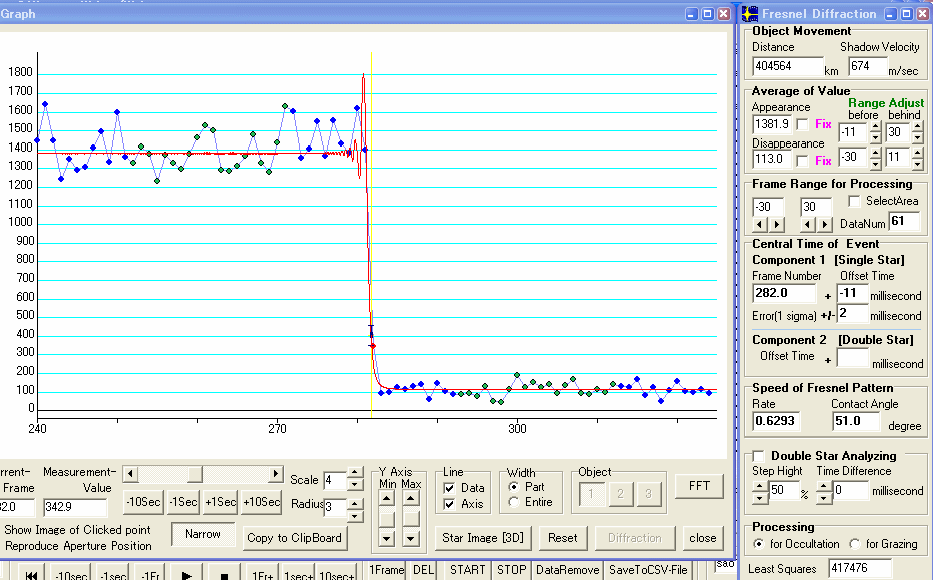
Figure 3.Disappearance of main component
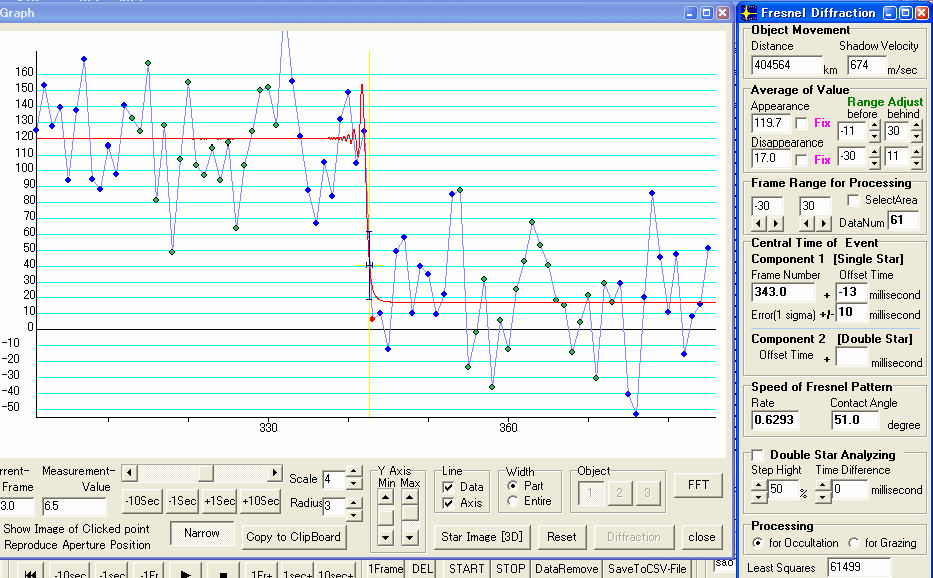
Figure 4. Disappearance of companion
First star : No.282 Frame -11 millisecond +/- 2 millisecond
Time of TIVi (centre of frame) is No.282=10h42m12.23s then event time is 10h42m12.22s
Hence, the event time is 10h52m10.190sSecond star : No.343 Frame -13 millisecond +/- 10 millisecond
Time of TIVi (centre of frame) is No.343=10h42m14.27s then event time is 10h42m14.26s
Time Difference = 61 Frames – 2 millisecond = 61 / 29.97 – 0.002 second = 2.035 – 0.002 = 2.033 second
4-2. Ikeda, Nagano
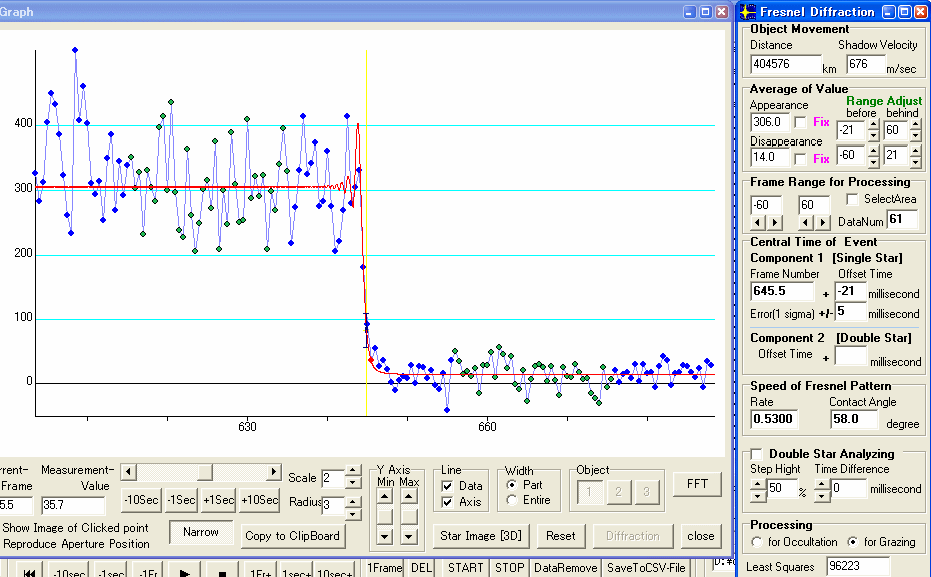
Figure 5. Disappearance
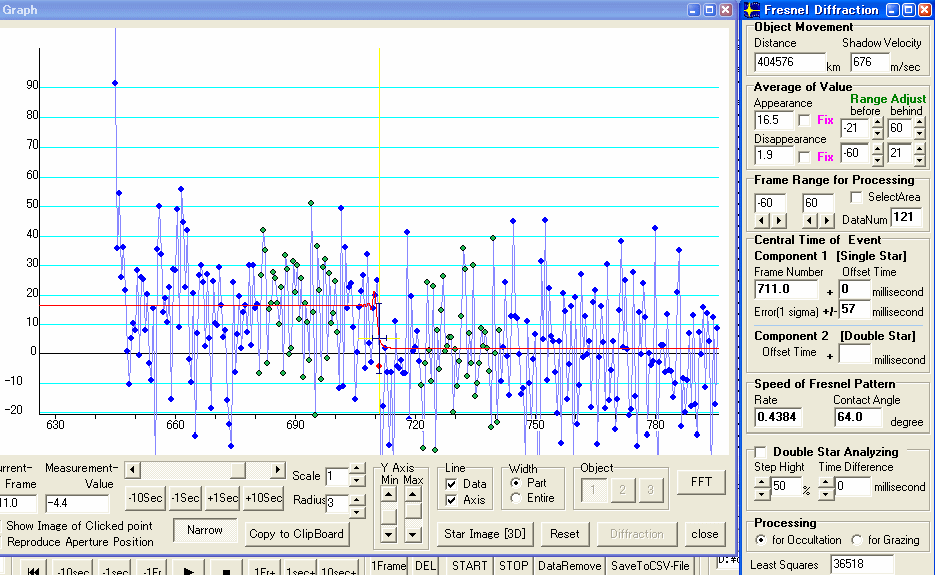
Fugure 6. Appearance
First
omponent : No.645.5 Frame -21 millisecond +/- 5 millisecond
Time
of KIWI-OSD are .. at field start :10h52m10.194s, at field end :
10h52m10.227s. Then centre of field is 10h52m10.211s .
Hence, the event time is 10h52m10.190s
Second component : No.711.0 Frame +0 millisecond +/- 57 millisecond
Time of KIWI-OSD are .. at field start :10h52m12.363s, at field end : 10h52m12.396s. Then centre of field is 10h52m12.380s .
Hence, the event time is 10h52m12.380s
Time Difference = 2.190 second
5. Astrometry
|
Fig.7 Position of component and lunar limb |
Case of b2>b1 From Fig、6 b1=a*sin A --------------(1) b2=a*sin(A+P1-P2) --------(2) C=P1-P2 b2=a*sin(A+C) =a*(sinA*cosC+cosA*sinC) =a*sinA*cosC+a*cosA*sinC --(3) From (1) a = b1/sinA --------------(4) put into (3) b2 = (b1/sinA)*sinA*cosC +(b1/sinA)*cosA*sinC b2 = b1*cosC+b1*(1/tanA)*sinC b2 = b1*cosC+b1*sinC/tanA b2 = b1(cosC+sinC/tanA) b2/b1 = cosC + sinC/tanA b2/b1 - cosC = sinC/tanA (b2/b1 - cosC)/sinC = 1/tanA tanA = sinC/(b2/b1 - cosC) --(5) put A into (4) and obtain separation a. Hence Position Angle P is P=90-(p1+A) ----------------(6)
In the case of b1>b2 then a=b2/sinA ----------------(4) tanA = sinC/(b1/b2 - cosC) –-(5) P=90+p2-A ----------------(6) |
P1=82 , P2=68 then C is
C=-26 = 14
b1=0.218*2.190=0.4774
b2=0.151*2.033=0.3070
this case is b1>b2 then
tan A = sin14 / (0.4811/0.3070 – cos 14) = 0.4137
A = 22.48
P=90+68-22=136
a=b2/sinA=0.3070/0.3823=0.8030
then
Separation = 0.80 (arcsec)
Position Angle = 136 (degree)
These values are well corresponding to the description of catalog .
6. Magnitude of stars
|
from Konohama obs. |
from Ikeda Nagano |
|
Lunimous of pair : 1381.9 Step : average(119.7,113.0) = 116.4 Background : 17.0 Luminous of first star = 1381.9-116.4=1265.5 Luminous of second star=116.4-17.0=99.4 Lunious of pair = 1381.9 – 17 = 1364.9 from the canalog the pair is 6.92 .. (Tycho2) from the formula m1-m2 = 2.5 log(b2-b1) = 2.5 log() The difference in magnitude of the two star is .. m1-m2 = 2.5 log(b2/b1) = 2.5 * log(1265.5/99.4) =2.76 if the magnitude of the pair is 6.94 then the magnitude of first star is .. m1-6.94=2.5*log(1364.9/1265.5)=0.08 m1=7.02 then the magnitude of second star is 9.78 |
Lunimous of pair : 306.0 Step : average(14.0,16.5) = 15.3 Background : 1.9 Luminous of first star = 306.0-15.3=290.7 Luminous of second star=15.3-1.9=13.4 Lunious of pair = 306.0 – 1.9 = 304.1 from the canalog the pair is 6.92 .. (Tycho2) from the formula m1-m2 = 2.5 log(b2-b1) = 2.5 log() The difference in magnitude of the two star is .. m1-m2 = 2.5 log(b2/b1) = 2.5 * log(290.7/13.4) =3.34 if the magnitude of the pair is 6.94 then the magnitude of first star is .. m1-6.94=2.5*log(304.1/290.7)=0.05 m1=6.99 then the magnitude of second star is 10.33 |
In the observation at Ikeda, the gain of camera was set in a small value to avoid the off axis rays reflected at inside the optical tube. And it is considered that the value of pixels are not large enough to estimate the magnitude. Therefore, I will report the value calculated from Konohama observatory as star's magnitude.